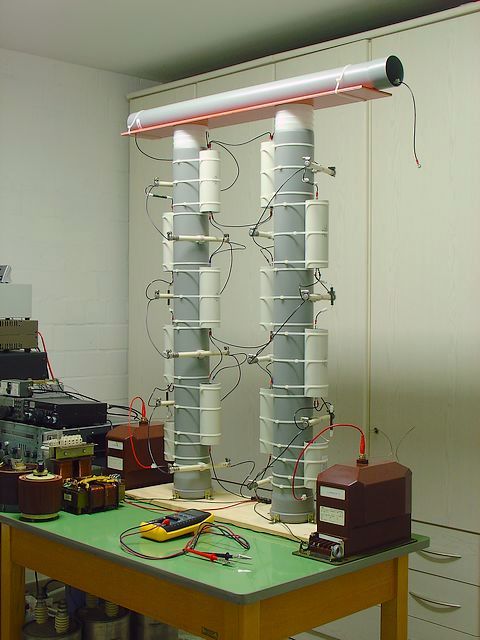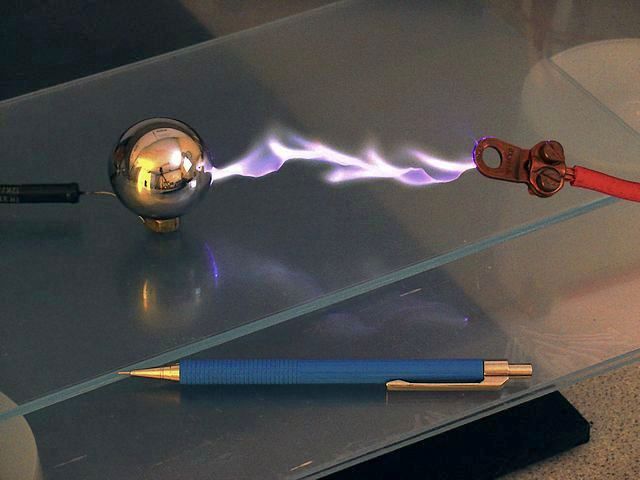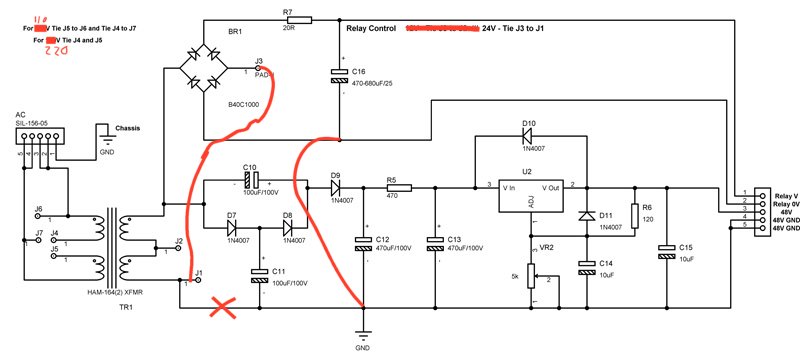[quote author="guavatone"]Actually I am using a tripler because I have a bunch of these xfmr's. This is only going to be pulling 10-25 mA since it will only be for 2 mics at most for now. I feel a bit silly bothering folks about a circuit that is not all that important, but I am curious about some things about these regs that I didn't understand up until now.
I was trying to figure the reasoning of different R1/R2 values. I read somewhere that the minimum current from output to Adj was (R1) 10mA on the spec sheet but that down to 5mA was fine.
is this the spec sheet rating?
Adjustment Pin Current Change = 10 mA ≤ IOUT ≤ IMAX
does this mean that the current from R1 just needs to be less than 10mA than Iout?
This guy has some wacky results with adj bypass and no output caps, check his his final tests.
http://www.tnt-audio.com/clinica/regulators_noise2_e.html[/quote]
Adjustment Pin Current Change = 10 mA ≤ IOUT ≤ IMAX (and next line 3V ≤ (Vin - Vout) ≤ 40V) are test conditions, giving typical 0.2uA up to 5 uA for the National part.
You are looking for Minimum Load Current, giving typical 3.5mA up to 10mA for the National LM317, other manufacturers show 5mA up to 12mA for this parameter. Just make shure, you pull enough for predictable results. This can be your always connected circuit behind (not true in your case as phantom can be switched off per mic for usual), around the regulator (your schematic) or something in between (and your R6). As you already noticed, depending on target voltage the required rating for R1 (your VR2) rises bejond standard specs when you want to pull the min.load thru R2 (your R5) only. Pull the rest thru a load resistor (your R6) instead.
Phantom power is 10mA per mic (ignoring 14mA max for dead short condition in your mic cable) times 2 for the other mic + always pulling 12mA for your VR2/R5+R6 plus some leakage current, so your quoted 10-25mA may be a little on the low side.
Your linked 'no output caps' quote seems to ignore connected circuits behind the psu (smoothing caps, IC-bypassing, ..).
[quote author="bcarso"]There is an odd discrepancy then between the quoted 783 prescription for good load transient response and what National shows for the behavior of the 117 (note that I went back and edited the link in my earlier post which didn't work with a comma appended).
National shows superior load response when the reference cap is used.
I guess someone should actually make some measurements.[/quote]
Texas Instruments TL783, page 8.
National LM117/LM317 , page 7.
I always imagined the 783 as a high voltage version of the 317. There may be more to it.





























![Soldering Iron Kit, 120W LED Digital Advanced Solder Iron Soldering Gun kit, 110V Welding Tools, Smart Temperature Control [356℉-932℉], Extra 5pcs Tips, Auto Sleep, Temp Calibration, Orange](https://m.media-amazon.com/images/I/51sFKu9SdeL._SL500_.jpg)











